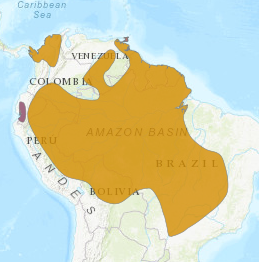Birdfinding.info ⇒ Locally common in many parts of its range, but scarce or extirpated from others due to large-scale trapping for the pet trade. It is easily seen at most of the Amazonian ecolodges. More accessible sites where it can be found reliably include El Paujil Natural Bird Reserve in Colombia, and many places in Brazil, including Adolpho Ducke Botanical Garden (in Manaus), the Transpantaneira, and city parks in Campo Grande. In Panama, it is most readily found at Cana in Darien National Park, but is also often seen along the highway between Meteti and Yaviza. On Puerto Rico, it has become a common sight at several parks in San Juan, including Juilo Enrique Monaga National Park. In Florida, there is a free-flying flock in South Miami that is often found at Matheson Hammock Park and the University of Miami campus.
Blue-and-yellow Macaw
Ara ararauna
Tropical lowlands of South America, where it is mainly associated with swampy forest and palm savanna, especially Mauritia palms, but occurs in a wide range of habitats from rain forest canopy to semiopen cerrado.
Occurs west of the Andes in eastern Panama and northern Colombia, and east of the Andes essentially throughout the Amazon Basin, the Guianas, and the Brazilian cerrado biome, north to southern and eastern Venezuela, east to western Piauí and Bahía, and south to central Bolivia, northeastern Paraguay, northern São Paulo, and central Minas Gerais.
On Trinidad, it was extirpated in the 1970s, then reintroduced in the 2000s.

Brazilian records from © WikiAves
Urban populations appear to be established in Caracas, Venezuela, and San Juan, Puerto Rico, and possibly several other cities, including Miami, Florida.
Identification
Unmistakable across most of its range: a very large, vividly colored macaw with blue upperparts and yellow underparts. Has some green on the crown and a black throat.
The facial skin is whitish with small black feathers arrayed in lines.
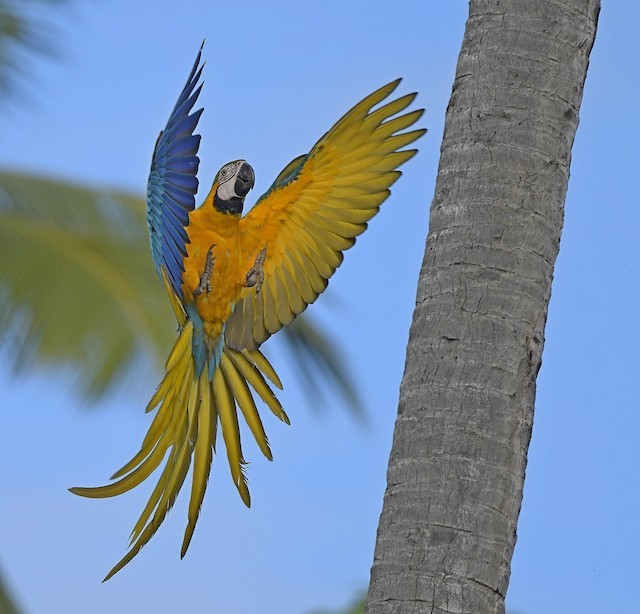
Blue-and-yellow Macaw. (Nariva Swamp, Trinidad; January 2, 2019.) © Paul Arneson
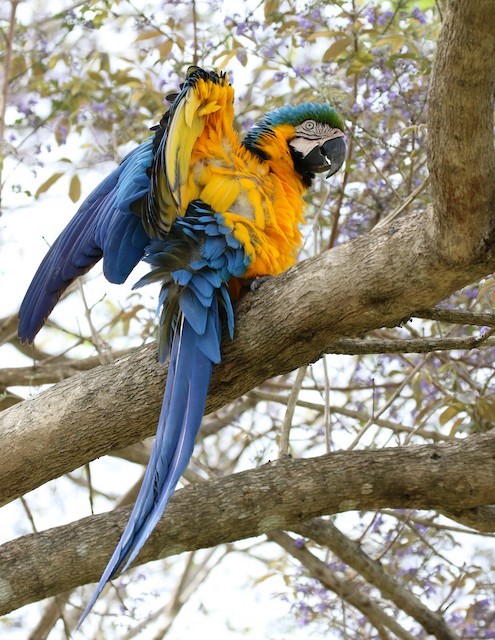
Blue-and-yellow Macaw. (Pousada Piuval, Mato Grosso, Brazil; September 30, 2018.) © Matthew Grube

Blue-and-yellow Macaw, at a likely nest site. (Pousada Piuval, Mato Grosso, Brazil; September 30, 2018.) © Matthew Grube

Blue-and-yellow Macaw, close-up showing finely arrayed feathers on its mostly bare facial skin. (Pousada Portal Paraíso, Mato Grosso, Brazil; February 9, 2016.) © Luciano Bernardes

Blue-and-yellow Macaws, aglow. (Rio das Mortes em Dom Osorio, Mato Grosso, Brazil; June 6, 2016.) © Carmen Lúcia Bays Figueiredo

Blue-and-yellow Macaw. (Hacienda La Esperanza, Manatí, Puerto Rico; October 12, 2018.) © Alcides L. Morales Pérez
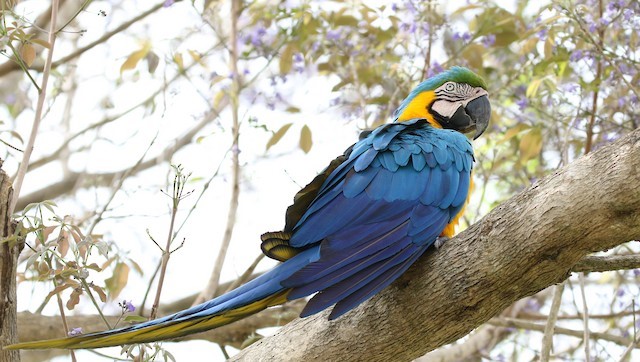
Blue-and-yellow Macaw. (Pousada Piuval, Mato Grosso, Brazil; September 30, 2018.) © Matthew Grube

Blue-and-yellow Macaw. (Jardim da Amazônia, Mato Grosso, Brazil; September 20, 2017.) © Dave Curtis

Blue-and-yellow Macaws. (Nariva Swamp, Trinidad; January 2, 2019.) © Paul Arneson
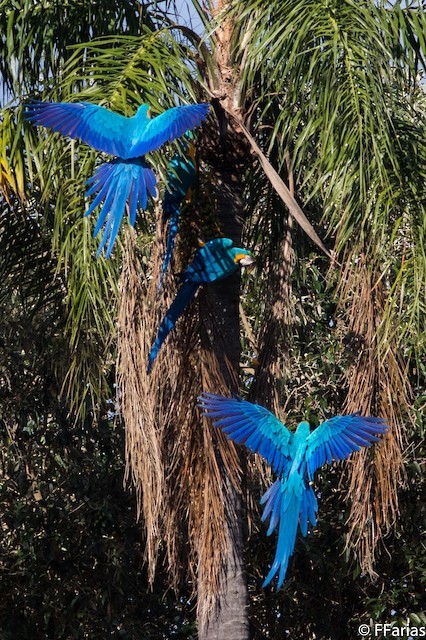
Blue-and-yellow Macaws, showing the differing blue tones of the body feathers and coverts, and the flight and tail feathers. (Morro do Diabo State Park, São Paulo, Brazil; April 21, 2017.) © Fernando Farias
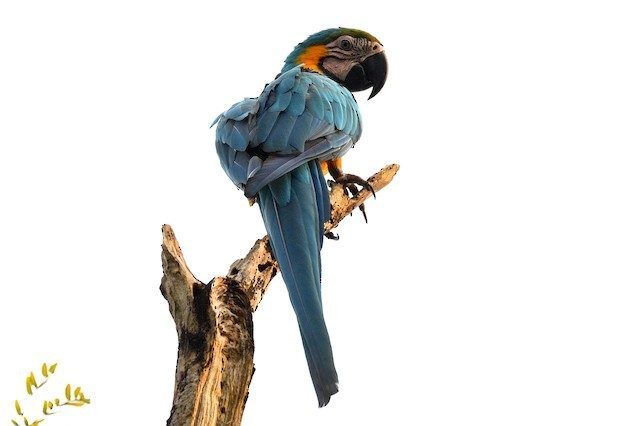
Blue-and-yellow Macaw. (Saquena, Loreto, Peru; March 6, 2019.) © Hugh Whelan
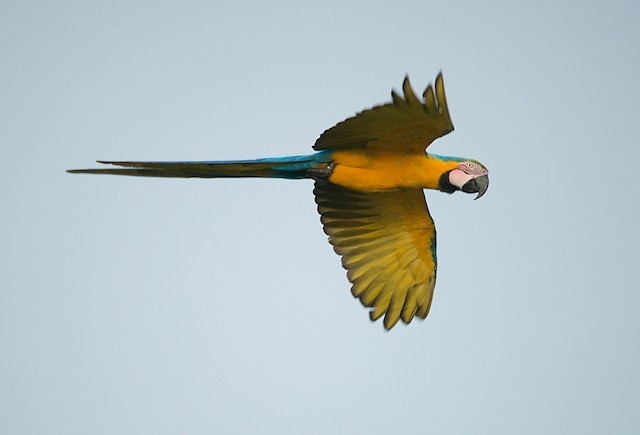
Blue-and-yellow Macaw. (Pousada Portal Paraíso, Mato Grosso, Brazil; February 9, 2016.) © Luciano Bernardes

Blue-and-yellow Macaws. (INPA Tower ZF-2, Amazonas, Brazil; April 13, 2013.) © Claudia Brasileiro
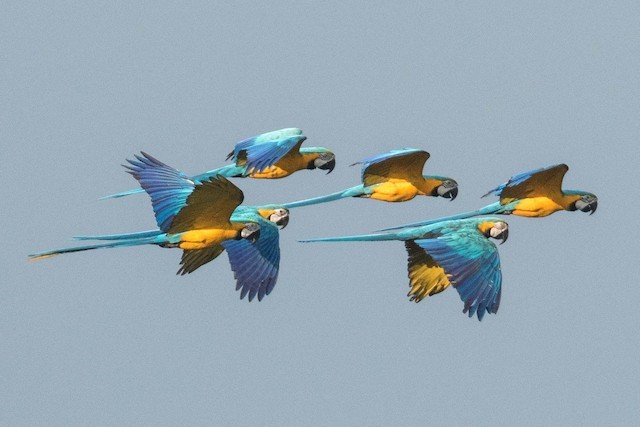
Blue-and-yellow Macaws. (Posada Amazonas, Madre de Dios, Peru; July 26, 2016.) © Eric VanderWerf

Blue-and-yellow Macaws at a clay lick. (Tambopata Research Center, Madre de Dios, Peru; July 18, 2013.) © Andre Moncrieff

Blue-and-yellow Macaw. (Nariva Swamp, Trinidad; January 2, 2019.) © Paul Arneson
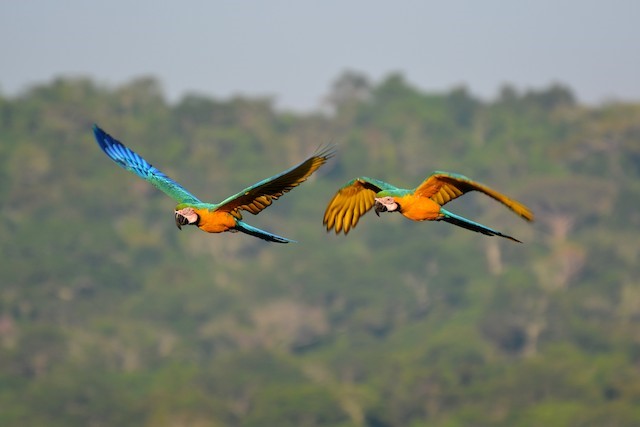
Blue-and-yellow Macaws, showing greenish tones on their backs and wing coverts. (Rio Cristalino, Mato Grosso, Brazil; September 9, 2014.) © Henry Cook
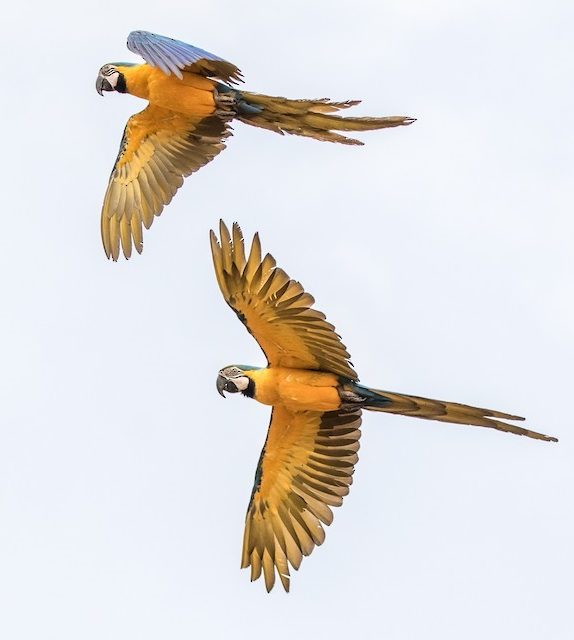
Blue-and-yellow Macaws. (Planaltina Campus, Instituto Federal de Brasília, Distrito Federal, Brazil; August 6, 2018.) © Fernanda Fernandex
Cf. Blue-throated Macaw. In northern Bolivia, the Blue-and-yellow Macaw overlaps with its critically endangered close relative, the Blue-throated Macaw. The two species are nearly identical except that Blue-throated is a paler, grayer shade of blue above and has a blue throat-patch that is larger than Blue-and-yellow’s black throat patch.
Notes
Monotypic species.
References
Ascanio, D., G.A. Rodriguez, and R. Restall. 2017. Birds of Venezuela. Christopher Helm, London.
eBird. 2019. eBird: An online database of bird distribution and abundance. Cornell Lab of Ornithology, Ithaca, N.Y. http://www.ebird.org. (Accessed May 8, 2019.)
ffrench, R. 2012. A Guide to the Birds of Trinidad & Tobago (Third Edition). Cornell University Press, Ithaca, N.Y.
Forshaw, J.M. 2010. Parrots of the World. Princeton University Press, Princeton, N.J.
McMullan, M., and T. Donegan. 2014, Field Guide to the Birds of Colombia (Second Edition). Fundación Proaves de Colombia, Bogotá.
Ridgely, R.S., and P.J. Greenfield. 2001. The Birds of Ecuador, Volume II: Field Guide. Cornell University Press, Ithaca, N.Y.
Ridgely, R.S., and J.A. Gwynne. 1989. A Guide to the Birds of Panama (Second Edition). Princeton University Press, Princeton, N.J.
Schulenberg, T.S., D.F. Stotz, D.F. Lane, J.P. O’Neill, and T.A. Parker. 2007. Birds of Peru. Princeton University Press, Princeton, N.J.
van Perlo, B. 2009. A Field Guide to the Birds of Brazil. Oxford University Press, Oxford.
WikiAves, Arara-canindé, https://www.wikiaves.com/wiki/arara-caninde.

